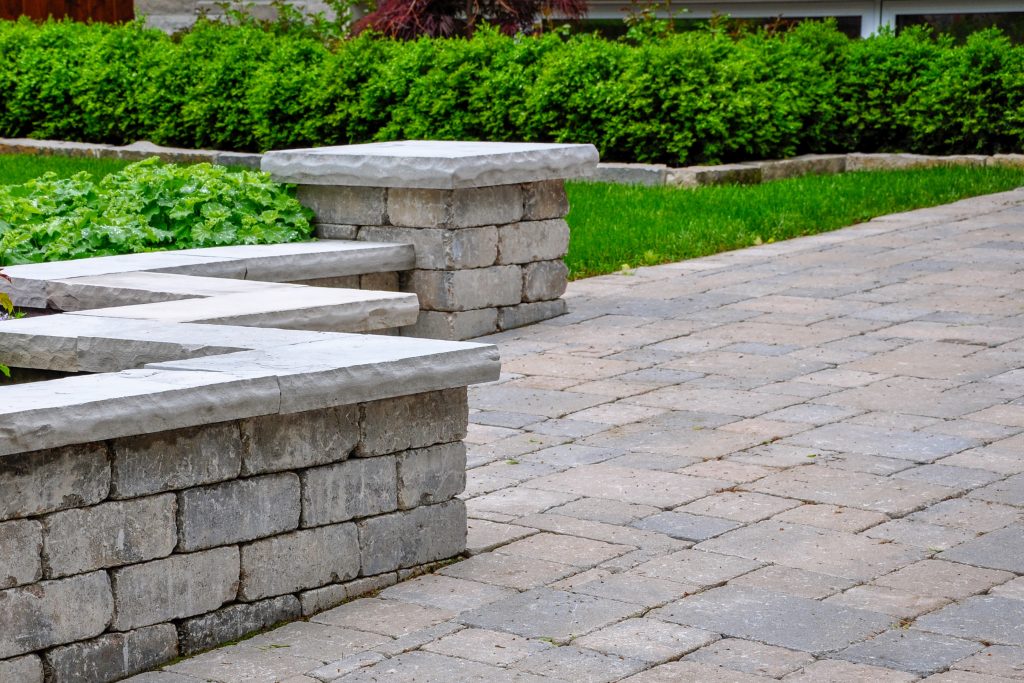Earlier this week we talked about the benefits of having a concrete paver patio. Today we are going to go a bit further – tips for removing stains from concrete pavers. This will help your pavers stay looking newer longer.
Removing Stains from Pavers – Oil
Since we’re coming to the warm weather, we thought we’d start out with a common problem that comes with grilling season – oil stains. Now, you can also get grease and oil on your pavers from your vehicles as well. But it also comes with an outdoor kitchen or a grill.
- Keep rags, paper towels, and some oil-absorbent material nearby in your garage or near your grill.
- If oil or grease has just spilled, lightly blot, rather than rub, that area using paper towels or one of your clean rags. Liquid laundry detergent or dish soap can remove most of the oil stains. Apply it right to your stain and let it sit for 20 to 30 minutes. Then use a brush with nylon bristles to scrub it, rinsing it using hot water. Do again if needed.
- If the stain has become dry and it’s been absorbed, do your best to soak up whatever you can. Leave some granular material on the area for around 6 hours. Then sweep the material up.
Removing Stains from Pavers – Hard Water
When you see a water stain on a paver, it’s actually efflorescence. Pavers start exhibiting a deposit that looks like a powder, usually in the first 2-3 years after they were installed.
This happens when those soluble salts that the pavers contain start reacting with fluctuating temperatures, humidity, and rainfall. As this water evaporates, those salts rise to the surface. This creates a whitish appearance.
If you want to get rid of this look, there is something called efflorescence remover that the majority of manufacturers offer. It’s a bit abrasive, so you want to use it in an area that isn’t conspicuous first. Then use it for cleaning your whole surface.
Removing Stains from Pavers – Rust
If iron or steel items sit above or on your paver area for a certain amount of time, it’s possible that you are going to see rust stains. Since this builds up as time goes by, it can be really hard to remove it.
Removing the stains means that you have to use something that can damage the sealer that has been applied. It also can cause etching on your pavers’ surface, so it’s a good idea to apply it to your whole area so the look is uniform. First, test a little area and if you have questions, consult with a contractor.
If you can, remove the rusting material. But if you need to do cleaning, manufacturers often will offer materials for rust removal. Apply that material based on the directions on the label. Then scrub using a brush with soft nylon bristles and thoroughly rinse the area.
We hope that you found this blog about removing stains from pavers useful. Don’t forget, we offer hardscaping services along with a lot of other services. interested in knowing more? Contact us here.


